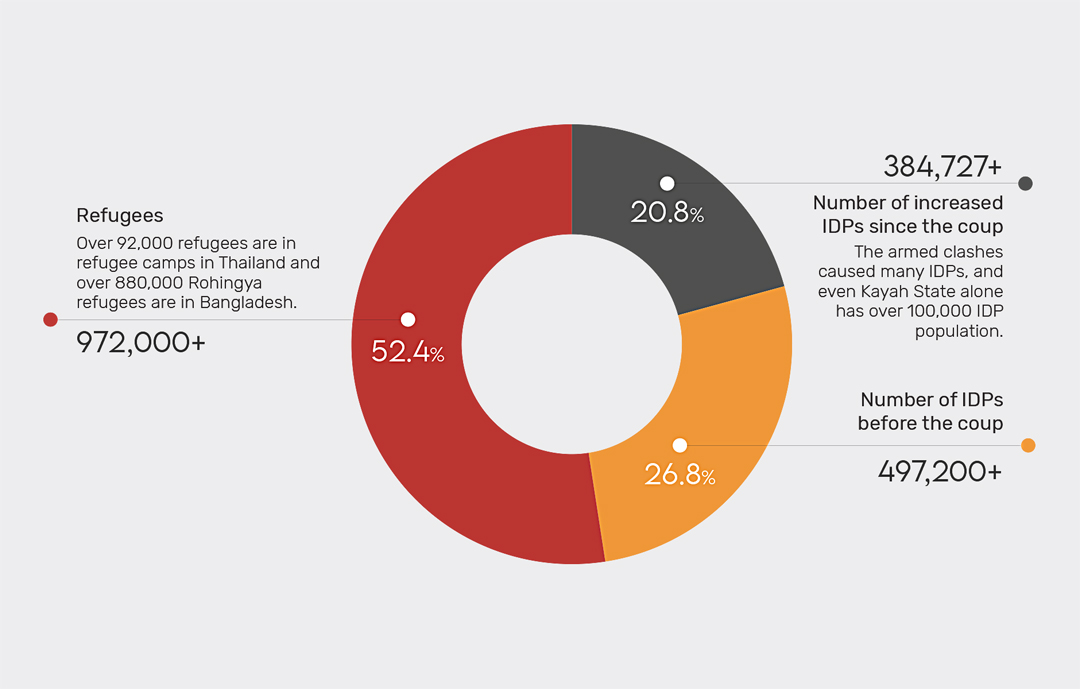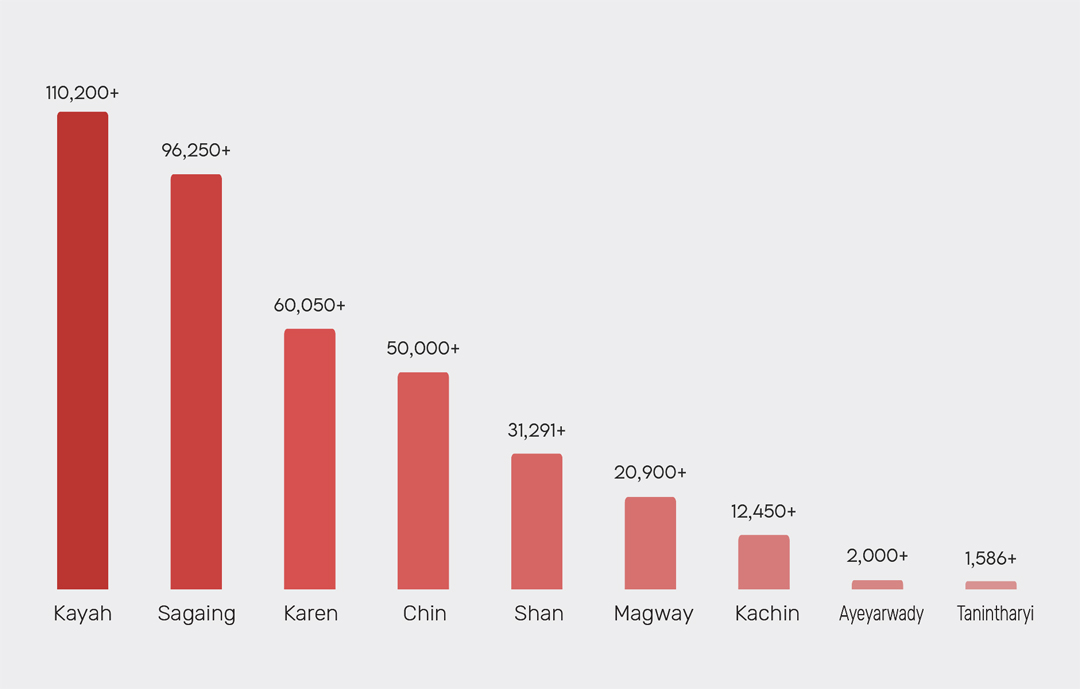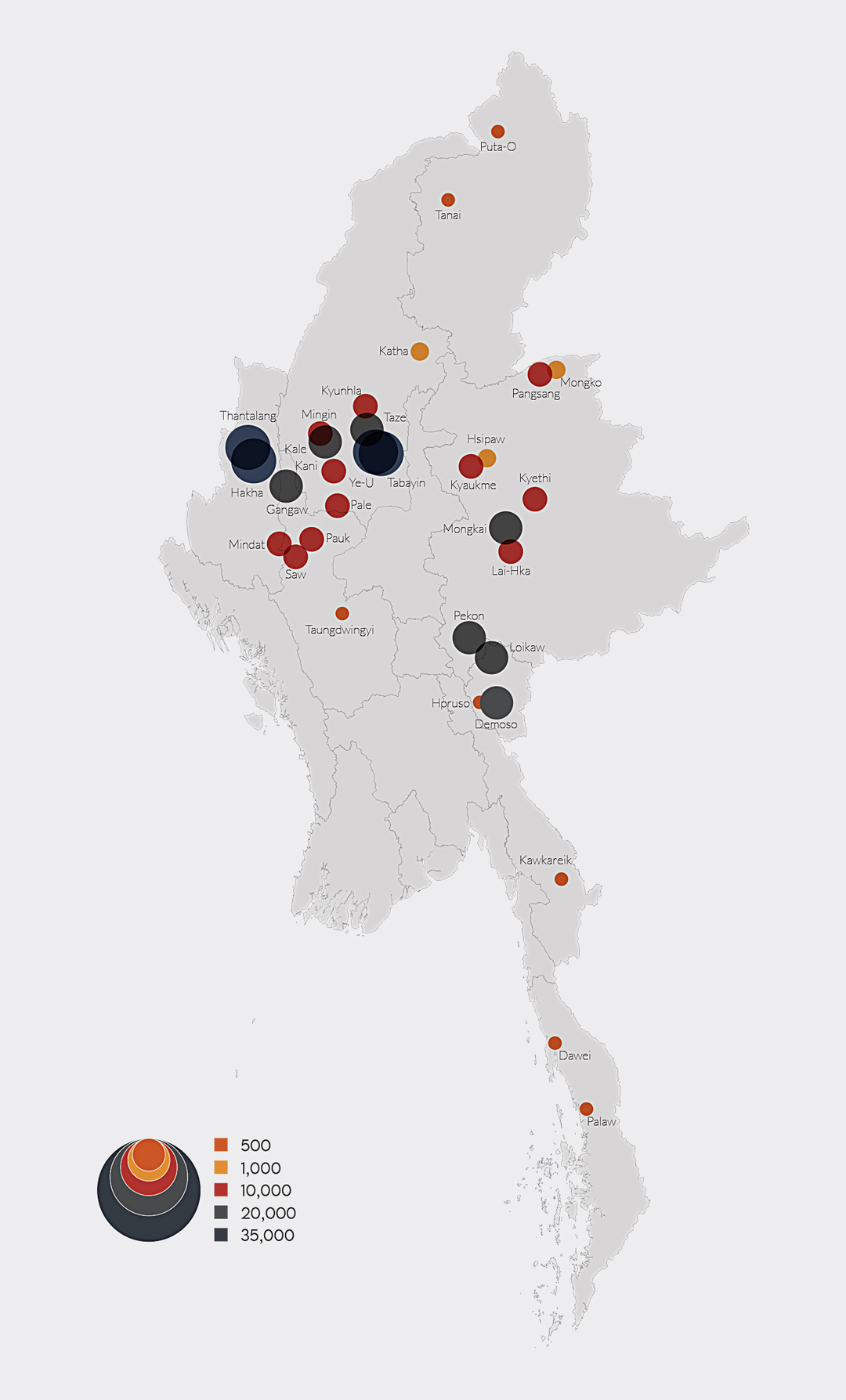(What Matters No. 65 – From February 1 – December 2, 2021)
(This article is a translation of the Burmese language version that ISP-Myanmar posted on its
Facebook page on December 3, 2021.)
Since the military staged a coup d’état on February 1, 2021, various forms of mass protest against injustice have occurred across Myanmar. Protests are still ongoing in a variety of different forms, including armed conflicts between the ethnic armed organizations (EAOs) and regime forces in ethnic regions where those EAOs are based. Simultaneously, fighting between the People’s Defense Forces (PDFs) and regime forces has also erupted in some areas. This has created a growing need for humanitarian assistance as conflicts and clashes have intensified and the number of internally displaced persons has risen.
∎ Refugees and Internally Displaced Persons Increase to Nearly 400,000
Since the military coup, from February 1, 2021 to December 2, 2021, battles and clashes across the country have resulted in a total of 384,727 refugees. Since there were over 497,200 refugees prior to the coup, the total number of refugees who left Myanmar grew to more than 881,927. Moreover, there are over 97,200 refugees in camps at the boarders with Bangladesh and Thailand. After the coup, refugee numbers increased in regions where fighting between local People Defense Forces (PDFs) and regime forces intensified. Kayah State has the highest number of refugees at over 110,200. Sagaing Region has the second highest number of refugees at 96,250.
∎ Situation in the last week of November
18,000 residents fled their homes after fighting intensified between regime forces and local People Defense Forces (PDFs) in Sagaing Region’s Kani township, Kyun Hla township, Taze township and Tapayin township during the last week of November 2021. In Saw township, Magway Region, over 2,000 residents fled to safety because of clashes between local PDFs and regime forces. Moreover, nearly 3,000 residents were displaced after their houses were burned down in Taze and Ayadaw townships, Sagaing Region on December 1, 2021.
∎ Why does this matter?
By looking at the number of civilian fatalities and injuries, how they were killed and wounded, and the number of people displaced by fighting involving regime forces and EAOs, or within EAOs themselves, it is possible to examine whether or not armed forces have committed human rights violations from the perspective of transitional justice. In addition, by studying the post-coup situation, further research can be conducted to examine whether there has been a change in conditions related to Myanmar’s peace process.
∎ Other relevant readings
On-the-ground reports from ethnic news organizations and other independent media groups provide regular updates about conflict situations, their impact, and the collateral damage in the aftermath of the military coup. These include reports of renewed fighting in ethnic areas, civilian fatalities, and rising refugee and IDP issues on the ground. In addition, records and reports by United Nations organizations such as the United Nations Office for the Coordination of Humanitarian Affairs (UNOCHA), and other independent local and foreign organizations also provide information about the ongoing conflict situation in Myanmar.




